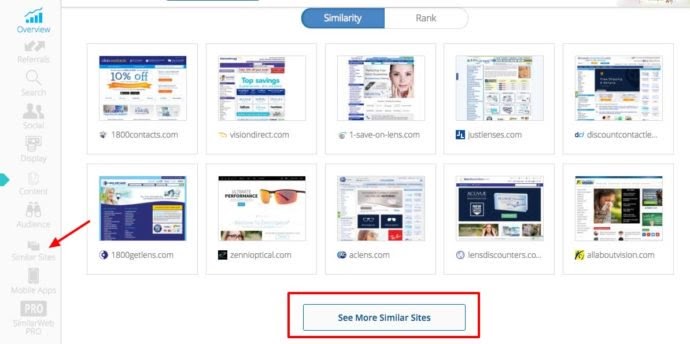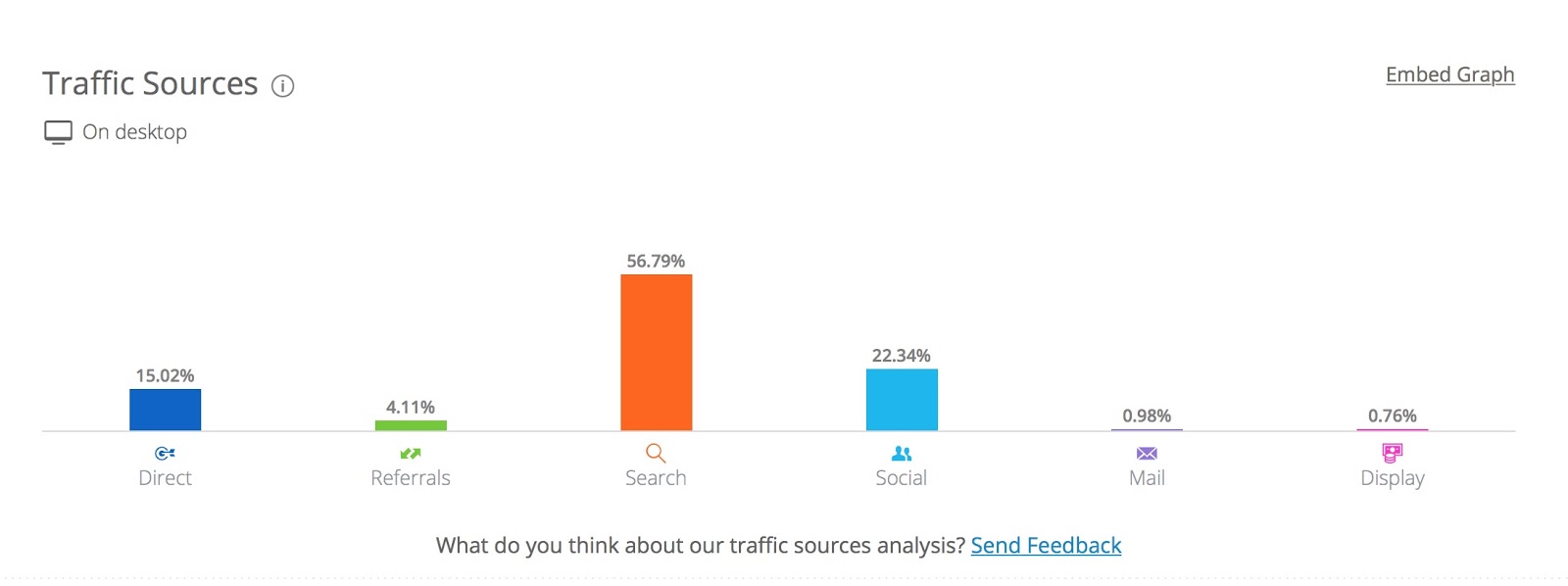We have all heard and talked about competitor analysis. We all know what it is.
However, when it comes to practical application and actually doing competitor analysis, most of us feel stuck.
We do not always know where to start from. We also get overwhelmed by the heaps of information, data, and insights that we found — that the various competitor analysis tools throw at us.
More importantly, we do not seem to know what information — from all that overwhelming data — we should gather and focus on. And what we should simply discard as trivial pieces of information that won’t do us any good in that moment.
If you have been struggling with any of these above-mentioned problems during your competitor analysis processes, you have come to the right place.
In this blog post, we discuss a few important things that you must focus on. These are the insights and sets of information you need to note down during competitor analysis.
Although every piece of information can be important — depending on how you look at things and what you are trying to achieve via competitor analysis — the following 5 things will give you a good head start in the right direction. You can still make it work to a good extent by ignoring the other information if they are getting too overwhelming for you.
At the end of the article, we will also highlight a common mistake that you should avoid during competitor analysis, so you are always moving in the right direction.
Before we begin, however, do you know who your competitors are?
Finding the right competitors
For a successful competitor analysis, you need at least 5-10 competitor websites with a reasonable amount of traffic and a well-established online presence.
Use the following two methods to quickly find relevant competitors in your industry:
Method #1: Use Google
Google is your best friend. And you can search for competitors on Google with two different techniques.
- Just type in the name of the products and/or services that you are offering and take note of the websites that are competing in Google’s search engine results pages (SERPS). If a few websites regularly pop up for the primary keywords you are trying to compete for; chances are that they are going to be the ones to beat eventually.
- The other method is to use the “Related” search operator. The “related:yourwebsite.com” search operator asks Google for websites that the search engine thinks are most closely related to yours. It’s a search operator that most people have forgotten about, but it’s still very valuable.

Method #2: Use a competitor analysis tool
The second method is to use a tool like SimilarWeb.com or SEMRush.com. By putting your own URL — or one of your competitor’s if you don’t have a website yet — these tools will show other related websites.
5 things to note down during competitor analysis
Now that you have successfully identified 5-10 competitors with well-established websites and a reasonable online presence, it’s time to start spying.
Following are a few things — a few questions that you need answers to — that you must note down. We are grouping them so you could understand them easily.
1. Basic competitor and market research
Find answers to the following questions:
- Out of the list of 5-10 competitors, who are your top three biggest competitors?
- Who are the competitors you can easily beat?
- What are the products and services they offer? Are they similar to what you are offering?
- What is their messaging?
- Are their marketing efforts geared towards the same target audience as yours?
- What is the USP of each of their businesses?
- What are their positive attributes according to their customers?
- What are their negative attributes according to their customers?
- What is their pricing strategy?
- Have you seen any recent changes in their targeted market segments or marketing strategy?
2. Top keywords
If you want to overtake your competitors in search engines, you need a solid content marketing strategy formed around the top keywords they are ranking for.
Find out their top keywords and start creating content that is better than theirs.
Even if you do not have paid competitive analysis, you can use SpyFu, SEMRush, Google, and Google Keyword Plannerto find the top keywords your competitors are ranking for.
For further reading on how to find those keywords and beat them at the content marketing game, read how to improve your site’s content with competitor analysis.
3. Traffic sources
There are dozens of channels and mediums to generate website traffic. However, not all of them would work for all types of businesses.
Therefore, you need to identify the traffic sources that would be the best fit for your particular business. And there is no better way than to reverse-engineer from what has already worked for other businesses in your industry.
You can do some manual research by signing up for their email marketing campaigns and newsletters, doing content marketing research, analyzing paid search engine advertising campaigns, and spying on their social media pages to see where lies the most traction and opportunities.
We also recommend using a tool like SimilarWeb (free version) to get a quick glance at each competitor’s traffic sources. Use SimilarWeb with multiple competitors, and you will see a pattern that will ascertain your direction.
4. Most popular web pages
You also need to note down the most popular web pages of each competitor’s website.
There are a few factors that you will have to consider. The most popular web pages should fulfill at least one of the following criteria:
- It should have the highest number of social media shares. Use BuzzSumo to quickly find that information.
- It should have the most number of backlinks. Use Open Site Explorer or Ahrefs to find that information.
- It should be driving the most organic traffic when compared to other web pages on the website. You can use SpyFu, SEMRush, or Ahrefs for finding this information.
5. Top countries
If you have a local brick-and-mortar business that only caters to people in a particular neighborhood or area, you do not need to worry about this. However, if you are catering to multiple countries across the globe, this information can be crucial.
It is, in fact, most important to e-commerce stores that sell their products globally. It is also equally important for bloggers who have worldwide readership.
Find the top countries that most of the traffic comes from for each of your competitors. If they all have a well-established global presence, you will see that around 75% of the countries with the most traffic would be overlapping.
In the end, you will be able to shortlist at least 5 different countries that have the biggest traffic share. These are the ones you need to target most efficiently.
One mistake you must avoid
When it comes to competitor analysis, it is important to understand the difference between stealing and copying.
Stealing is bad. Copying is not.
Also, when you steal from one source, it is plagiarism. And since it has been already done, it’s not going to take you very far. However, when you copy from multiple sources and put your own touch to it, it’s not plagiarism anymore. It’s research.
Just make sure to add your own creativity to whatever insights you find.
Furthermore, the data you find has to be interpreted and put into actionable items.
For instance, if you find that the UK has been the biggest traffic source of your competitors, you will have to advertise to the UK audience, run ads to target to that location and create content that is more targeted to them.
How you interpret that data and put those insights into actionable items depends on you, and that’s exactly how you can get ahead of your competitors — not by plagiarising ideas as they are.
